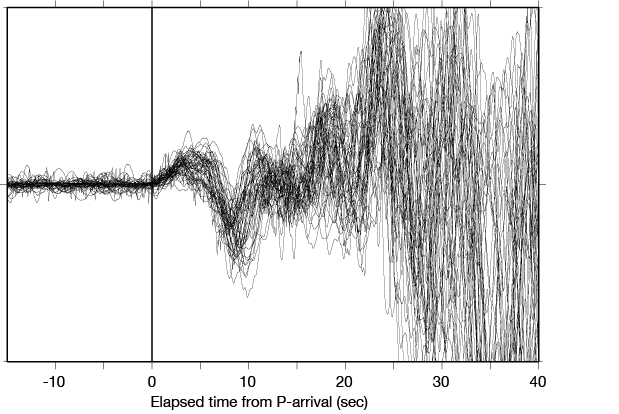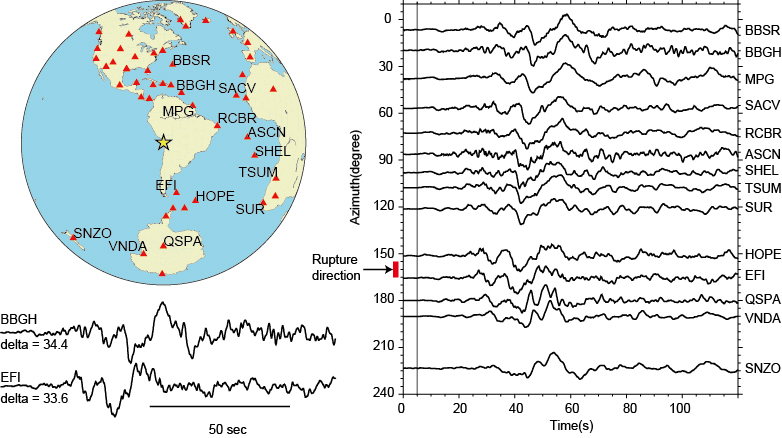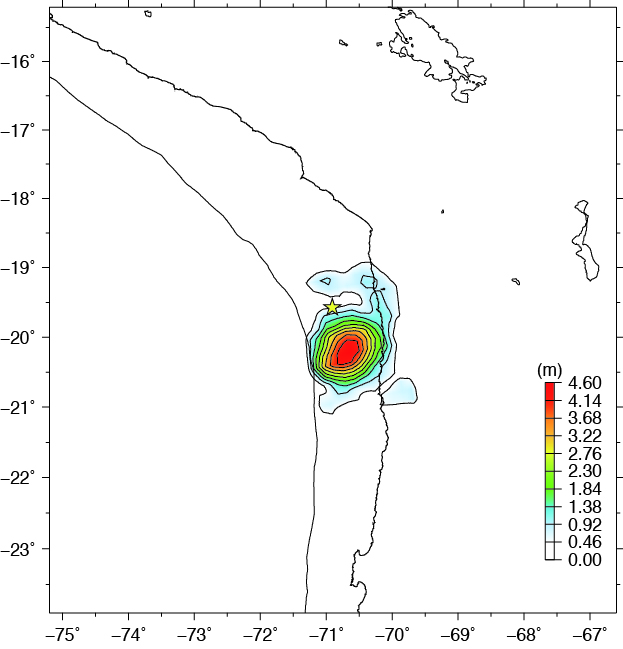The 2014 Iquique earthquake (Ver. 2)
Our results was published in GRL.
Yagi, Y., Okuwaki, R., Enescu, B., Hirano, H., Yamagami, Y., Endo, S. & Komuro, T. (2014). Rupture process of the 2014 Iquique Chile earthquake in relation with the foreshock activity, Geophys. Res. Lett., doi:0.1002/2014GL060274.
(Yuji Yagi, Univ. of Tsukuba)
Results
Seismic Moment = 1.5 x 10^21 Nm (Mw 8.1);
source duration T ~80 s;
(strike, dip, rake) = (350, 15, 88)
(Lat = -19.572, Lon = -70.908, depth= 22.5 km).
[Epicenter determined by CSN]
Data
slip distribution (GRD file for GMT) (3 Mb)
Slip on space knots (6 kb)
SAC data picked by manual work (4.8 MB)

Traces of the unfiltered vertical component of P-waveforms of the 2014 earthquake observed at 48 teleseismic stations (downloaded from IRIS, aligned by the first P-phase arrivals, and normalized by the maximum of the absolute amplitude of each waveform).

The clear directivity of the mainshock rupture can be also confirmed by visually inspecting the observed seismograms ordered function of their recording station azimuth.
Method
We applied the newly developed inversion method of Yagi and Fukahata 2011, in which the uncertainty of the Green’s function is taken into account. One of the clear advantages of this method is that the effect of correlated modeling errors are naturally mitigated, therefore making possible to discuss the detailed rupture process, including the small initial rupture phase [Yagi and Fukahata, 2011]. According to this method, the smoothness of slip distribution is objectively determined from the observed data, based on Akaike's Bayesian Information Criterion (ABIC) and the non-negative constraint for slip is not needed. (Data contains small negative slip.)
Slip distribution
